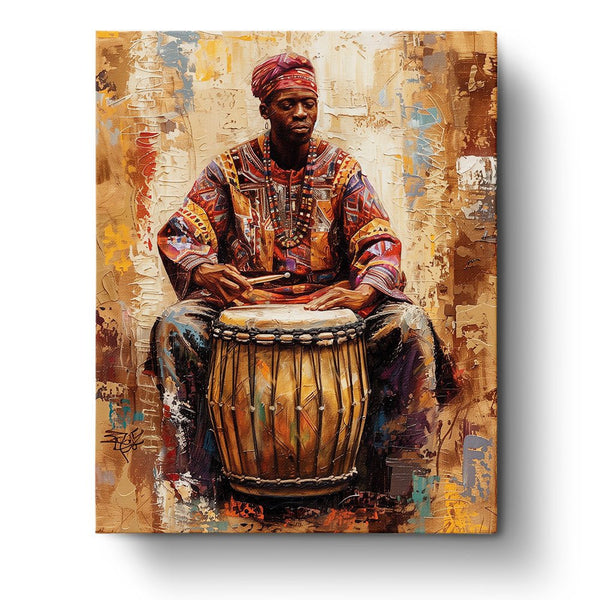Take a Look at Some of History’s Most Iconic Paintings
Artist or not, art fan or the opposite, you probably have seen or heard certain artworks in your life. Most of us have seen artworks in films, TV shows, books, and museums. Thus, many paintings throughout history have been referenced in popular culture--in media, books, and movies. Truly, many great artworks are never forgotten, even though the creators are no longer living. For thousands of years, society has been defined through the arts and other elements of culture. The impact it has made in the way we live, how our opinions are shaped, and what modern art is now today is unquestionable. Today, we look at some of the world’s most iconic paintings and how they changed the way we look at art and our lifestyle.


The way most people see paintings is that they are nothing but aesthetically pleasing images used for display or decoration. However, for art lovers--artists, collectors, curators, and alike, they are a way of life. How modern art evolved into the way it is today cannot be explained and appreciated without looking back at history’s most notable paintings. They shaped history in a way, too, and this is not an exaggerated opinion, it’s just the truth. If you look closely at culture, music, films, etc., it’s filled with allusions to artworks that are passed on to many generations. To give appreciation to the masterpieces that we all know and love today, we will take a look at some of history’s most iconic paintings and how they changed how we create, look, and judge artworks.
World’s Most Iconic Paintings
1. The Mona Lisa by Leonardo da Vinci:
Of course, we have to start with the most famous and recognizable painting of all time which was a subject to countless references in literature, cinema, music, theatre, artworks, and even memes. Shrouded with mystery and serenity, the impeccable skills of Da Vinci are showcased in one painting that redefined the era of Renaissance, probably the history of painting in general, too. This painting created a massive impact on our culture in a way that revolutionized the arts by challenging painters to create an accurate depiction of reality through the use of their pigments, brushes, and canvas. Thus, the Mona Lisa is also a patron of change because it changed and developed the style and process of how we paint today.

2. Dogs Playing Poker (A friend in need) by Cassius Marcellus Coolidge:
Although most people are usually familiar with the painting below entitled A Friend in Need, Dogs playing poker, most don’t know that it is actually a series of 18 paintings painted by Coolidge to advertise cigars which were commissioned by a company called Brown and Bigelow. This collection of paintings have become a popular culture symbol that has been spoofed and parodied many times in movies, TV shows, cartoons, and imitation artworks. Thus, it has become an American staple in most home decorations. Despite the wide acceptance the painting(s) garnered from the public, it is not something that art critics would consider as a masterpiece that can be compared to the works of Da Vinci, Rembrandt, or Warhol. It redefined what kitsch is without alienating its audience from the meaning of the painting: our fascination and connection to our loyal best friends - dogs.


3. The Birth of Venus by Sandro Botticelli:
This is one of the most prominent and groundbreaking artworks during the early Renaissance era that sparked controversy. The painting depicts a famous mythological subject wherein a newly-born goddess Venus is bare naked as she emerges from a shell and drifts towards the Cyprus shore. This painting is not as complex as Primavera, which is another known painting by Botticelli. According to historians and art critics, the meaning of the painting is simple as it symbolizes a new hope, a cultural rebirth of civilization that created a shift in geopolitical, cultural, and social beliefs during the period.

4. The Starry Night by Vincent van Gogh:
Definitely, The Starry Night is Van Gogh’s magnum opus that helped in building his popularity as a painter even after his tragic death. The painting showed bold colors of blue, white, and yellow, smeared thickly in the canvas to make the brush strokes visible. Such made the impasto technique very popular among artists. Truly known as one of the most recognizable and iconic paintings of all time, this painting is a depiction of his window view in the asylum at Saint-Remy based on his memory. Thus, it impacted the world of art in so many ways, especially in the Post-Impressionism movement which paved the way for the creation of modern art and abstract art.


5. Girl with a Pearl Earring by Johannes Vermeer:
Contrary to the popular belief that it was a portrait, this painting is actually a “tronie” or a headshot meant to capture the likeness of the girl’s facial features. Over the years, the painting has been given different titles in different countries but since the painting depicts an image of a young girl with a stunning large pearl earring, the title settled to what we know today. This painting created a large impact on culture, especially in literature. It was even adapted into a drama film in 2003 based on the 1999 novel of the same name.

The artworks on the list are just some of the most iconic paintings that even non-artists are familiar with. We hope that this glance at these paintings gives you more appreciation of the art world and how paintings can actually change the world. Do you agree that the above-mentioned should be considered iconic paintings?




